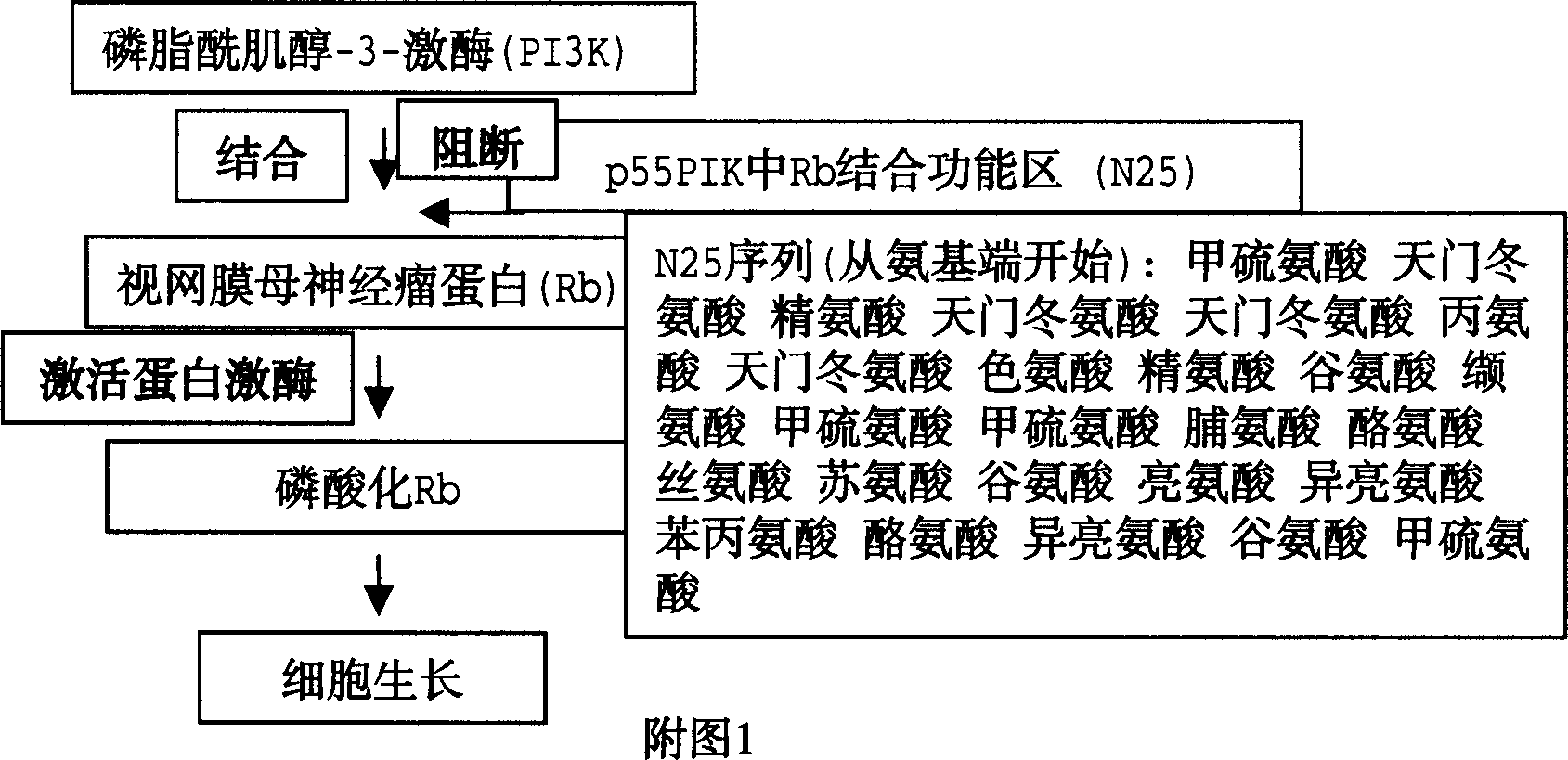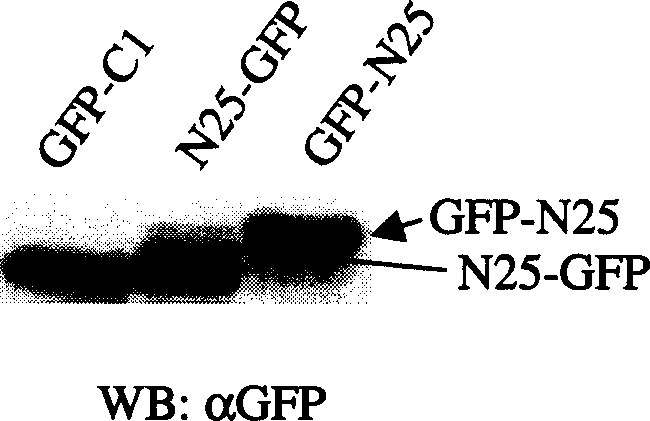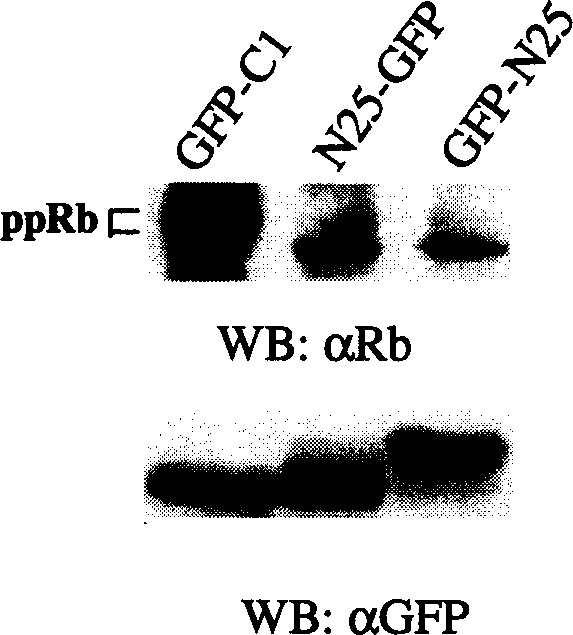Obtainment of cell growth inhibiting polypeptide and its usage
A technology of polypeptide sequences and derivatives, which is applied in the field of medical bioengineering, can solve problems such as unclear mechanisms, and achieve the effect of improving the ability to inhibit the cell cycle
- Summary
- Abstract
- Description
- Claims
- Application Information
AI Technical Summary
Problems solved by technology
Method used
Image
Examples
example 1
[0016] Example 1: A polypeptide cDNA encoding the amino-terminal 25 amino acid residues of p55PIK was introduced into pEGFP plasmid (this polypeptide is hereinafter abbreviated as N25).
[0017] The pEGFP-N1 and pEGFP-C1 plasmid vectors were purchased from Clontech Company in the United States (catalogue numbers: 6085-1, 6084-1), and the plasmids contained cDNA encoding green fluorescent protein (GFP). , catalog numbers are: R6011, R6021) digested plasmids, and the digested plasmids were separated and purified in agarose gel for subsequent ligation reactions. The kit for recovering DNA fragments from the gel is from Qiagen, Germany (the catalog number is: 28704).
[0018] The cDNA encoding the full-length protein of mouse p55PIK was derived from the mouse testis tissue cDNA library (Stratagene, USA, catalog number: 937308), cloned into pcDNA3 (purchased from Invitrogen, catalog number: V79020), and used to amplify N25 The PCR primer sequences for cDNA are:
[0019] Primer 1:...
example 2
[0023] Example 2: Detection of DNA constructs expressing fusion proteins
[0024] The expression of the fusion protein was detected by conventional DNA transfection experiments. We used COS7 cells (purchased from ATCC, USA, catalog number: CRL-1651) to detect the expression of the fusion protein.
[0025] The transfection kit was purchased from Invitrogen (catalogue number 11668) in the United States, and the transfection experiment was also completed according to the instructions provided by the manufacturer. COS7 cells were cultured in DMEM nutrient solution with 10% calf serum. After 48 hours of transfection, the COS7 cells were washed twice with normal saline (PBS), the cells were lysed by adding cell lysate, and the DNA was destroyed by ultrasonic waves, then an appropriate amount of 2-mercaptoethanol and bromophenol blue were added, and treated in boiling water for 5 minutes. Stored on ice, then loaded on 12% SDS-polyacrylamide gel electrophoresis. The separated prote...
example 3
[0026] Example 3: An experiment in which the expression of N25 polypeptide inhibits cell growth and cell cycle.
[0027] Detected with NIH / 3T3 (mouse fibroblast epithelial cells, purchased from ATCC, USA, catalog number: CRL-1658) and MCF-7 (human breast cancer cell line, purchased from ATCC, USA, catalog number: HTB-22) Effect of N25 amino acid polypeptide on cell growth.
[0028] Cells were cultured in DMEM containing 10% fetal bovine serum (FBS) at 37°C, 5% CO 2 / 95% air culture conditions in 10 cm cell culture dish.
[0029] Plasmids used in experiments: pEGFP-N25 (expressing N25-GFP fusion protein); pEGFP-C25 (expressing GFP-N25 fusion protein); pEGFP-N1 or pEGFP-C1 as control plasmids.
[0030] Plasmids and liposome transfection reagents (purchased from Invitrogen, U.S., catalog number: 11668) for transfection were mixed, left at room temperature for 15 minutes, and added to cells cultured in serum-free DMEM nutrient solution (cell density approx. 50%) were cultured a...
PUM
 Login to View More
Login to View More Abstract
Description
Claims
Application Information
 Login to View More
Login to View More - R&D
- Intellectual Property
- Life Sciences
- Materials
- Tech Scout
- Unparalleled Data Quality
- Higher Quality Content
- 60% Fewer Hallucinations
Browse by: Latest US Patents, China's latest patents, Technical Efficacy Thesaurus, Application Domain, Technology Topic, Popular Technical Reports.
© 2025 PatSnap. All rights reserved.Legal|Privacy policy|Modern Slavery Act Transparency Statement|Sitemap|About US| Contact US: help@patsnap.com



